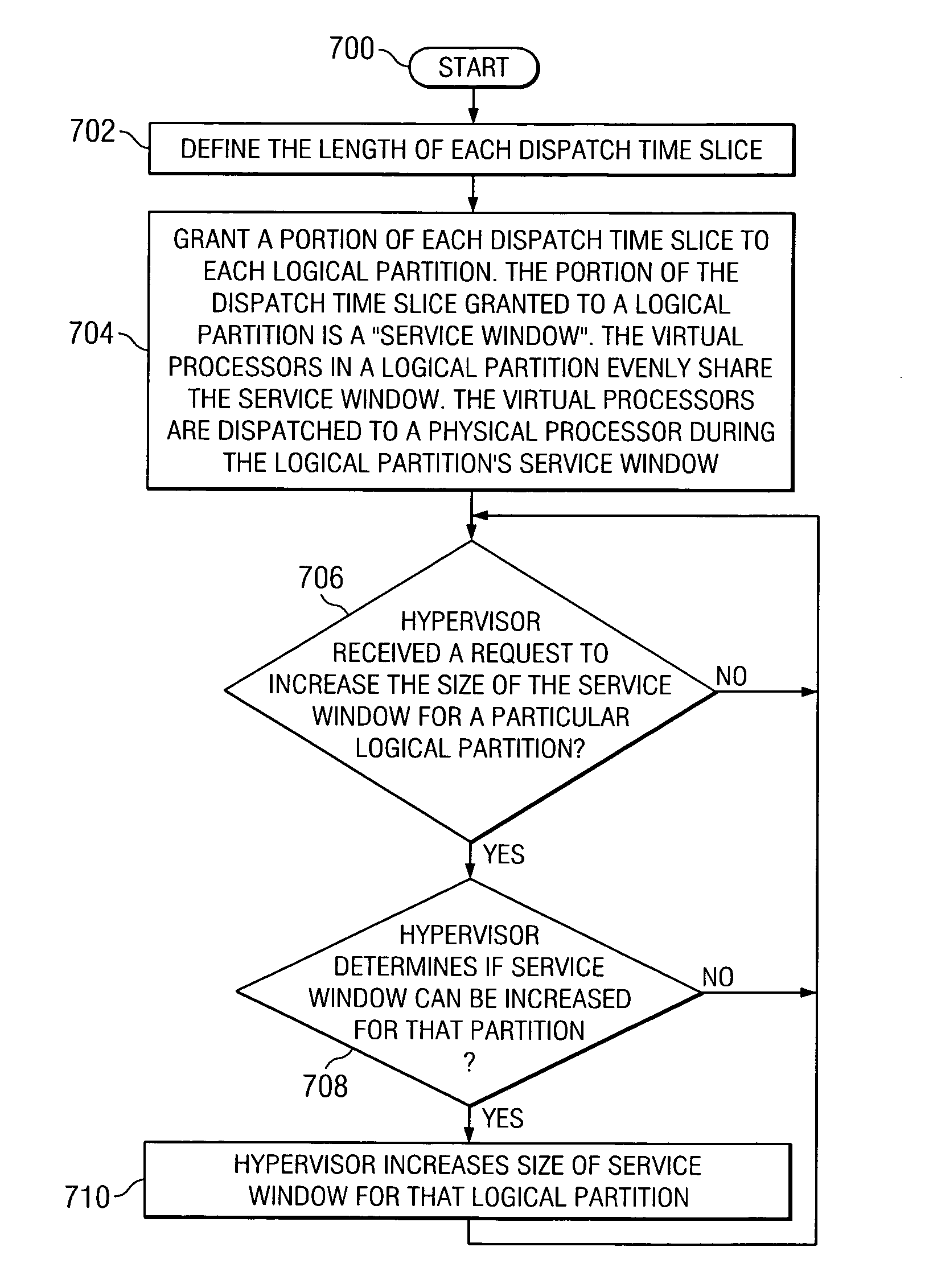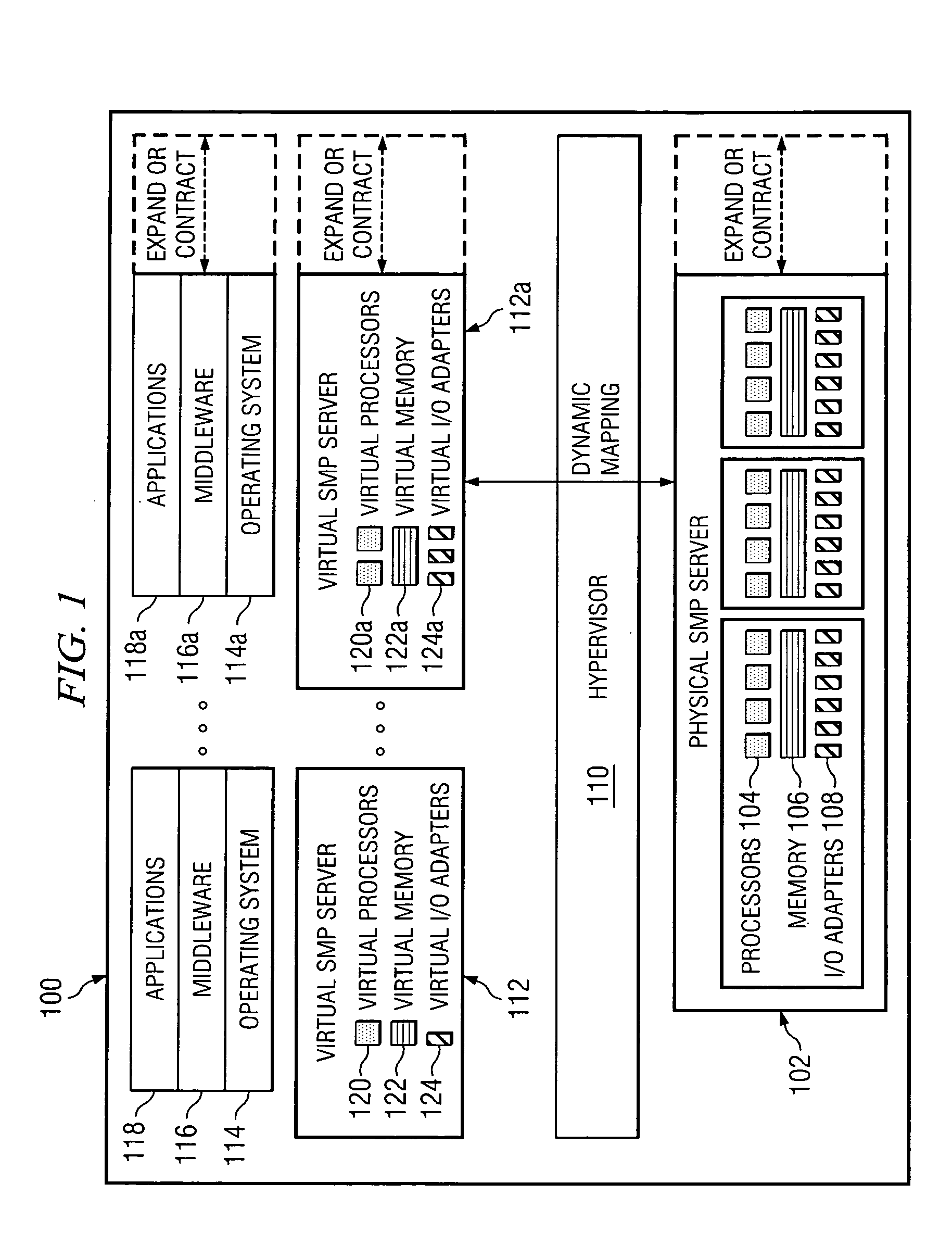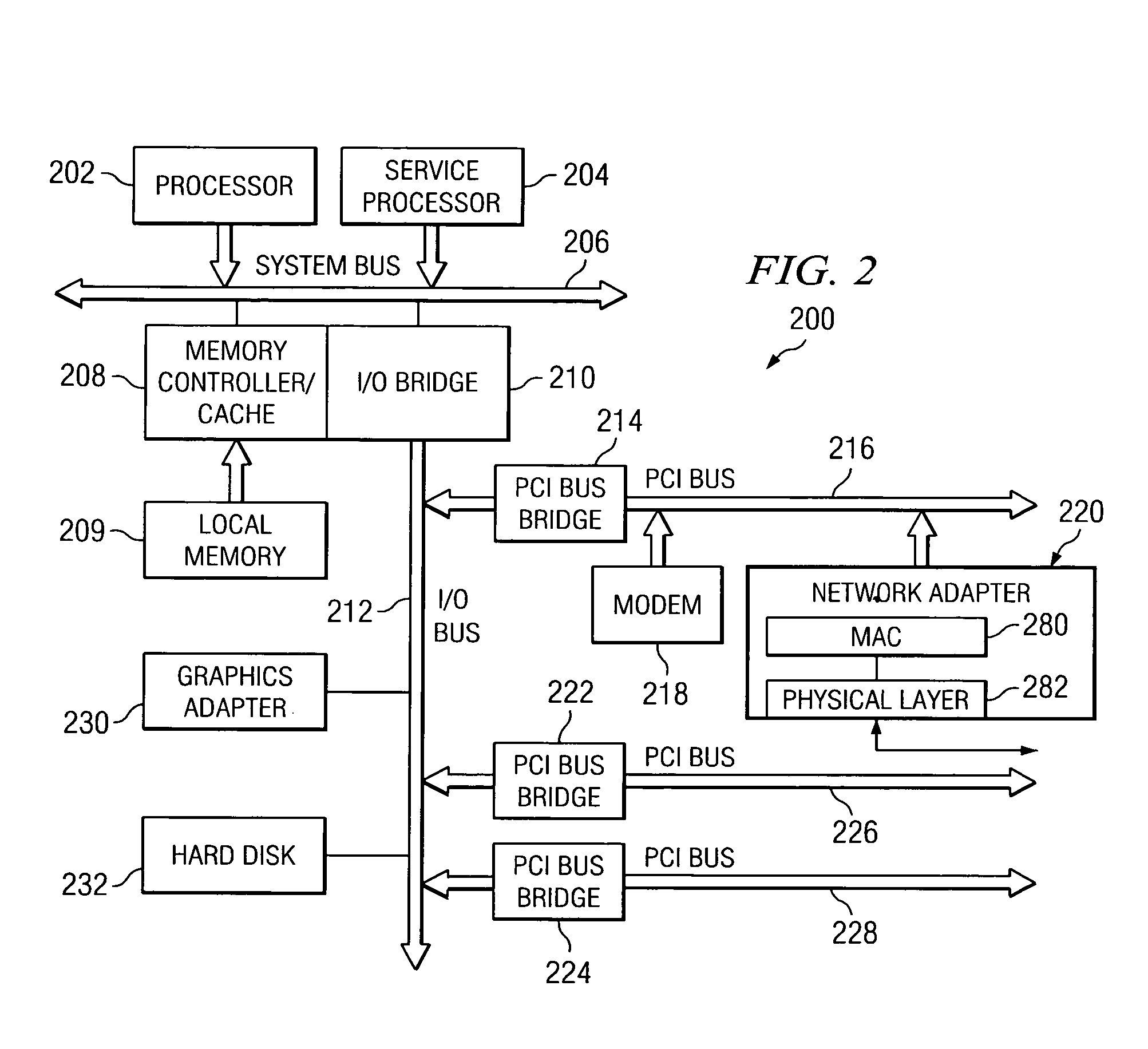Method, apparatus, and computer program product for dynamically tuning amount of physical processor capacity allocation in shared processor systems
- Summary
- Abstract
- Description
- Claims
- Application Information
AI Technical Summary
Benefits of technology
Problems solved by technology
Method used
Image
Examples
Embodiment Construction
[0027] A preferred embodiment of the present invention and its advantages are better understood by referring to the figures, like numerals being used for like and corresponding parts of the accompanying figures.
[0028] The present invention is a method, apparatus, and computer program product in a shared processor data processing system for dynamically tuning an amount of physical processor capacity that is allocated to each one of multiple logical partitions. The fraction of the physical processor that is allocated to each logical partition during each dispatch time slice is represented by the length of that logical partition's service window.
[0029] According to the present invention, a device will maintain status bits or a status buffer in which will be included information about errors or problems that occur in the device. When the device experiences an overrun or under-run condition, the device will log information about that condition in its status bits / buffer. The information...
PUM
 Login to View More
Login to View More Abstract
Description
Claims
Application Information
 Login to View More
Login to View More - R&D
- Intellectual Property
- Life Sciences
- Materials
- Tech Scout
- Unparalleled Data Quality
- Higher Quality Content
- 60% Fewer Hallucinations
Browse by: Latest US Patents, China's latest patents, Technical Efficacy Thesaurus, Application Domain, Technology Topic, Popular Technical Reports.
© 2025 PatSnap. All rights reserved.Legal|Privacy policy|Modern Slavery Act Transparency Statement|Sitemap|About US| Contact US: help@patsnap.com



